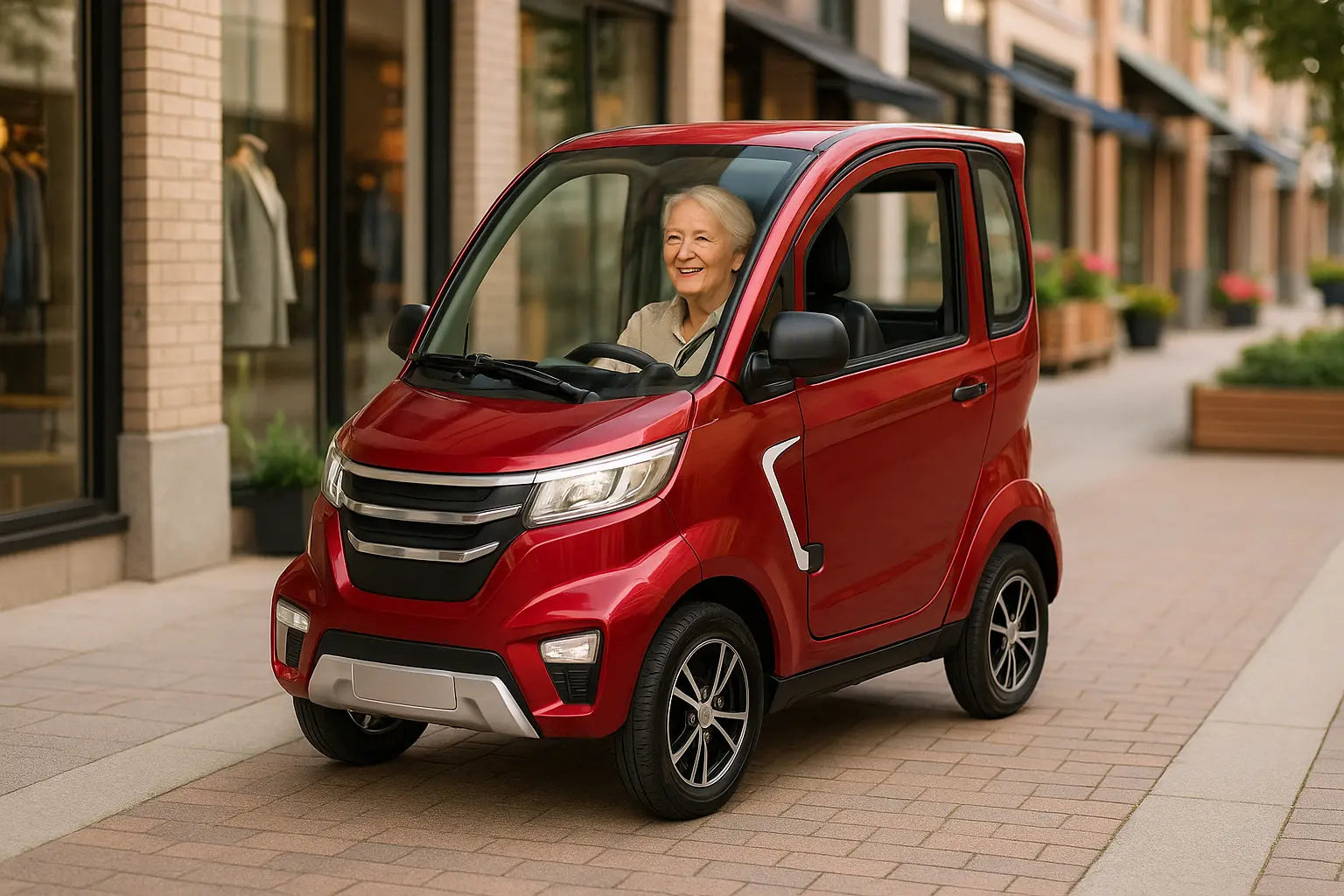Where You Can Ride Enclosed Mobility Scooters
Enclosed mobility scooters are generally permitted anywhere a traditional mobility scooter is allowed. While they offer more protection and comfort, they are still classified as mobility aids—not motor vehicles—in most Canadian regions.
✅ Sidewalks
You may operate an enclosed mobility scooter on sidewalks at a controlled, walking-speed pace. Because enclosed units are more substantial in size, it’s important to ride cautiously—slow down when passing others, allow ample room, and be courteous in tight areas. Think of it as walking beside others, just with more protection and stability.
✅ Bike Paths and Multi-Use Trails
Shared-use trails that permit bicycles and mobility devices are typically allowed for enclosed scooters as well. These areas provide extra space and smooth surfaces, making them ideal for longer outings. Stay to the right, maintain predictable steering, and yield to faster-moving cyclists approaching from behind.
✅ Parks and Pathways
Most parks welcome mobility scooters, including enclosed models, giving you the freedom to enjoy outdoor spaces in any season. Follow posted signage and remain on paved or packed pathways. Avoid soft ground, steep trails, or narrow boardwalks—your scooter is weather-ready, not off-road rated.
✅ Residential Areas and Paved Community Paths
Quiet neighbourhood streets, cul-de-sacs, and paved walking routes are typically permitted areas when sidewalks are unavailable. Ride on sidewalks first whenever possible, but if you must be on the road, stay to the far right, ride slowly, and remain visible. Use lights and signals for added awareness.
Enclosed Versus Ride-On Mobilitiy Scooter
Enclosed Mobility = Same rights as other mobility scooters, with more comfort and weather protection.
The rules don’t change—only your comfort level does.

Speed & Equipment Requirements
Most provinces classify enclosed mobility scooters under pedestrian mobility rules, which means:
- Max speed: typically 8–15 km/h depending on region
- Scooter must remain stable and safe at low speeds
- Lights required: front + rear when riding in low-visibility conditions
- Recommended: mirrors, horn, and signals for awareness and courtesy
Eclipse EV ride-on models are engineered to meet or exceed these standards.
Where You Should Not Ride Enclosed Mobility Scooters
While enclosed mobility scooters are permitted in most pedestrian spaces, there are areas where they should not be operated—either for legal reasons or for safety.
⛔ Highways, High-Speed Roads, or Traffic Lanes
Enclosed mobility scooters are not road vehicles and must not travel in vehicle lanes, on highways, or on roads with high-speed traffic. Even though enclosed units look more substantial than traditional scooters, they are still intended for pedestrian environments and low speeds.
⛔ Dedicated Motor-Vehicle or Bus Lanes
Lanes designed for cars, buses, or motorcycles are off-limits. These lanes have faster-moving traffic and limited space, creating unnecessary risk for scooter users.
⛔ Unpaved, Off-Road, or Rough Terrain Trails
Although enclosed scooters are weather-ready, they are not built for mud, loose gravel, steep inclines, forest trails, or off-road conditions. These surfaces can reduce traction and stability. Stick to paved pathways, sidewalks, and smooth multi-use routes.
⛔ Crowded Indoor Spaces (Unless Permitted)
While some malls, arenas, or event spaces allow mobility scooters, others may restrict enclosed models due to size and turning radius. Always check posted rules and speak with staff before entering tight, crowded indoor areas.
⛔ Bike Lanes Marked “Cyclists Only”
Multi-use paths are allowed, but dedicated cyclist-only lanes are not, unless local signage states otherwise. These lanes often involve higher speeds and limited maneuvering room.
